By Jamie Oliver
Fungi are an amazingly diverse group that includes not only mushrooms, coral, bracket, stinkhorn, and jelly fungi (to mention but a few), but also yeasts, moulds, and an assortment of nasty parasitic organisms that prey on both plants and animals. There is also a range of fungi that specialise in symbiotic relationships with other organisms e.g., lichens (fungus + alga + other micro-organisms), and mycorrhizae that are an important symbiont with the roots of many Australian trees. There are about 13,000 species of fungi formally named and recorded in Australia, although estimates put the real number closer to 250,000, including 5,000 species of mushrooms (of which only 5% have been named)1
Note: Many of us enjoy the edible mushroom which we usually purchase from the supermarket. There are other edible Australian wild fungi but we do not recommend that you try any of the fungi mentioned below or indeed any that you might find around Paluma – they are likely to be toxic and can cause serious harm!
Fungus identification often requires experience and technical skills, but there is a reasonable number that are so visually distinctive that almost no skills other than a good eye are needed to make an identification. The following 5 easy species are very distinctive, and at least during the wet season, they are fairly common along Paluma’s tracks.
1. Cyptotrama asprata (Golden Scruffy Collybia)
This distinctive and beautiful orange mushroom can be found along the H-track as well as other local tracks. The colour and prickly-looking surface of the cap are diagnostic. It grows in small groups on dead wood on the forest floor and is found worldwide in the tropics.
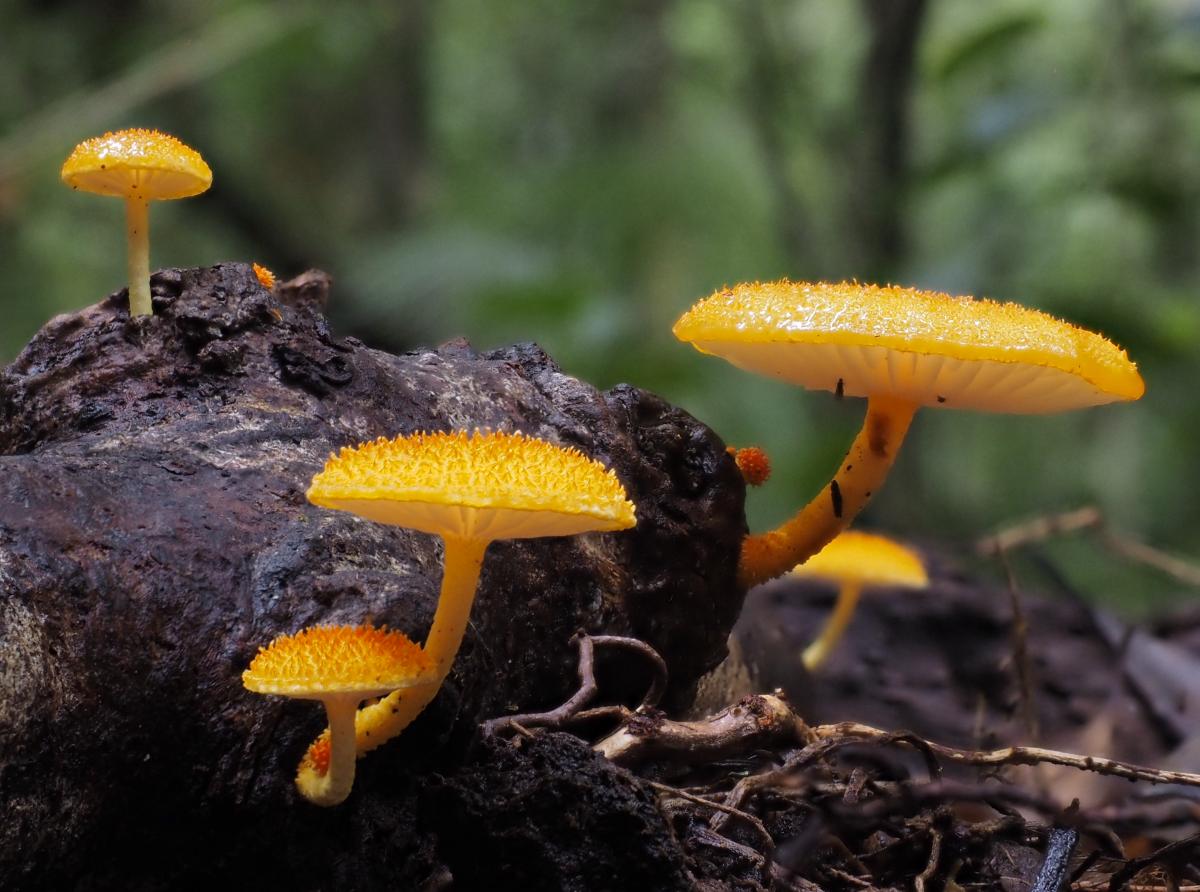
2. Leucocoprinus fragilissimus (Fragile Dapperling)
This dainty (and fragile) mushroom starts off with a rounded bell-shaped cap that becomes flat then slightly convex with age. The cap is generally cream coloured with varying degrees of yellow in the centre. It is quite common on local forest tracks. Even a gentle touch is likely to damage the cap. It is found on all continents.
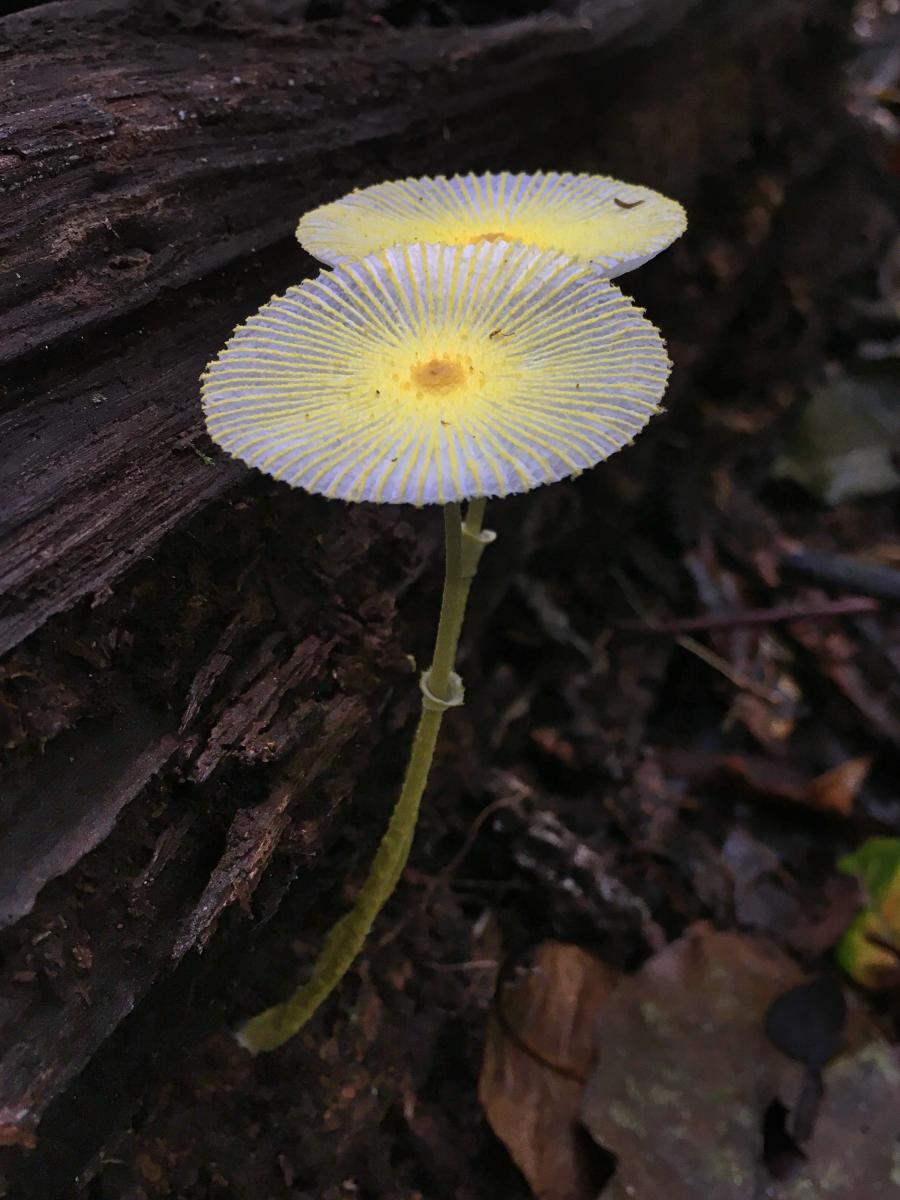
3. Filoboletus manipularis – Soldier Pore Fungus
This common wet-season mushroom forms large clumps on both living tree trunks and old fallen logs. It has a pale brown central cap surrounded by pale cream to white, with a white speckled stem. It differs from other clumping fungi on trees in that it has distinctive reticulate pattern of pores under that cap instead of linear gills. Some strains of this mushroom are bioluminescent; however, this does not seem to be true of the ones around Paluma.


4. Stereum ostrea – Golden Curtain Crust
This fungus is commonly found on fallen logs. When still growing and the weather is damp, they form deep orange concave fans that grow out and up from a narrow base that remains attached to the log. The lower surface of the thin fan is smooth while the upper surface often displays concentric rings that vary in shade. In older specimens that are starting to dry the colours change to rings of grey, brown and green. Eventually they completely dry out and become papery crusts that crumble away. The fan can sometimes split radially as it grows. Individuals can occur singly or cover the length of large logs.

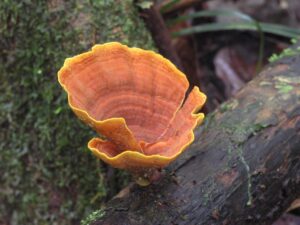
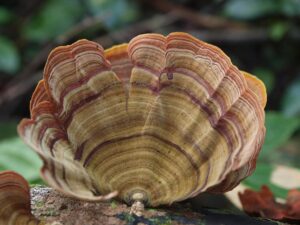
5. Dacryopinax spathularia – Fan-shaped Jelly Fungus
This is a beautiful and common fungus that can be found as small yellow/orange blades poking out of cracks in dead wood or as larger convoluted fans. It has a rubbery texture and often grows in clusters following grooves in old lumber. It may even be found on the wooden exterior walls of local buildings.
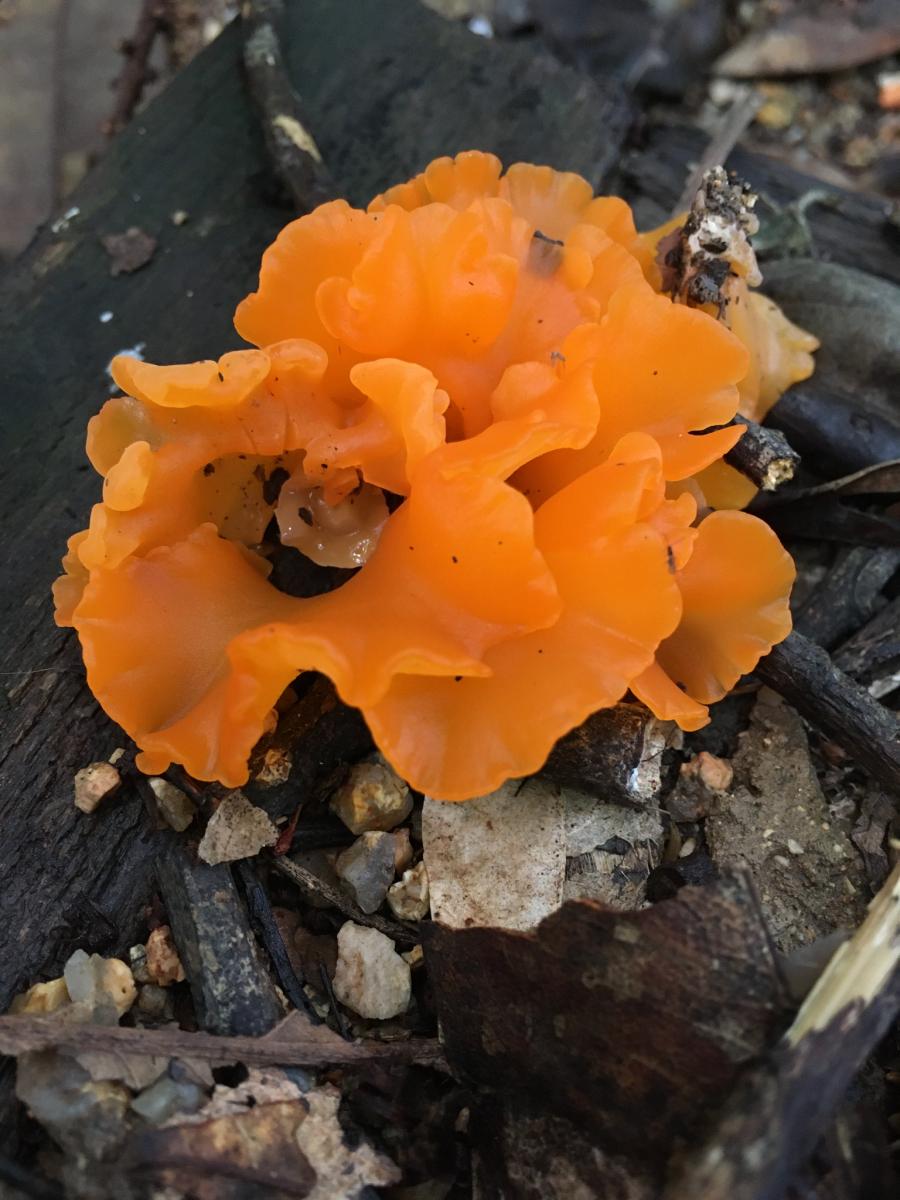

Great photos! That log covered with the Golden Curtain Crust is particularly impressive. Where did that shot come from? Very Clear and informative text. Its amazing only 5% of mushroom species have been named. Thank you.
Thanks Jamie, I very much enjoyed reading this post. Very informative and fantastic photos which will assist with ID.